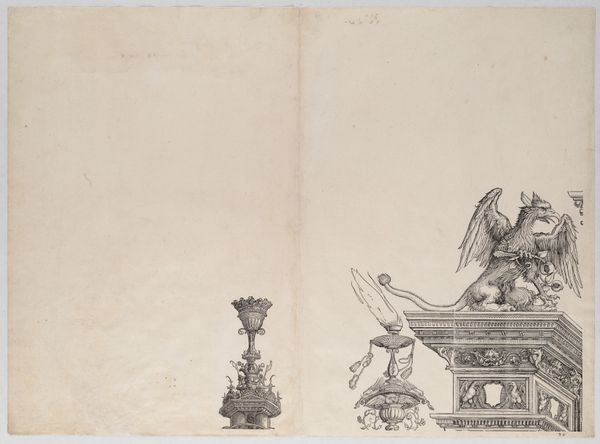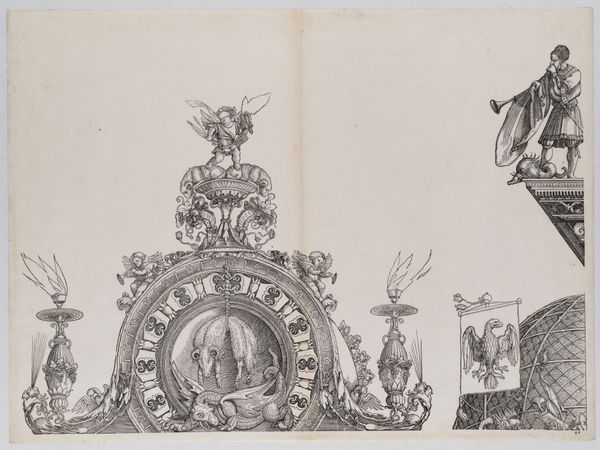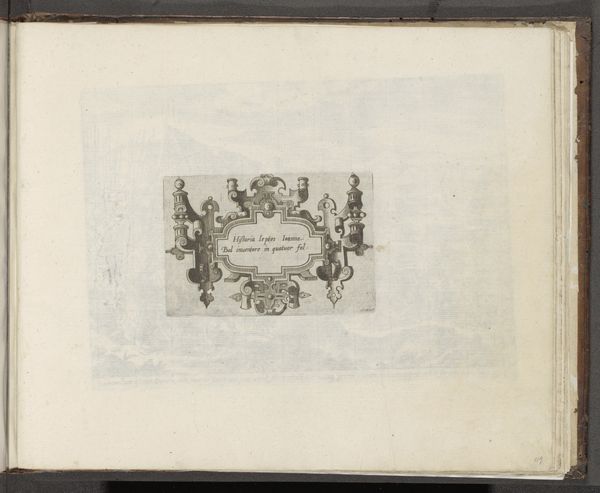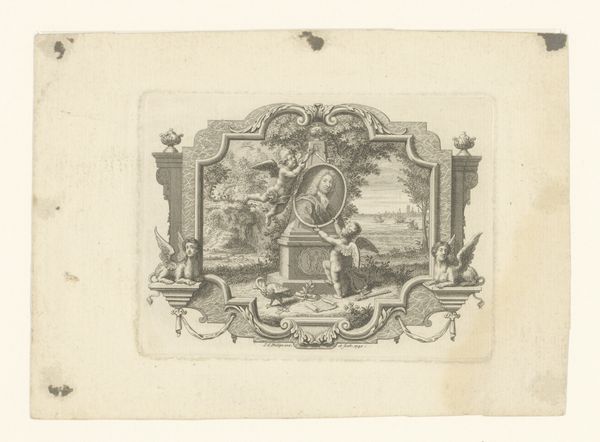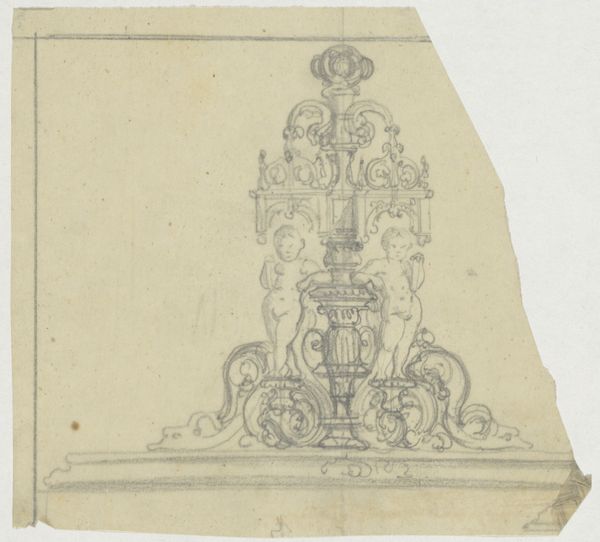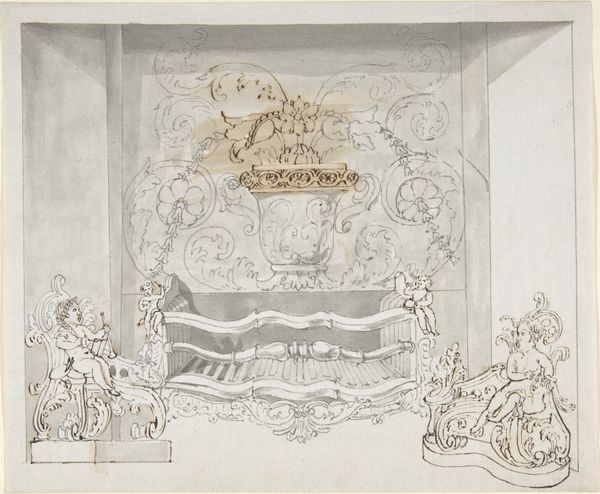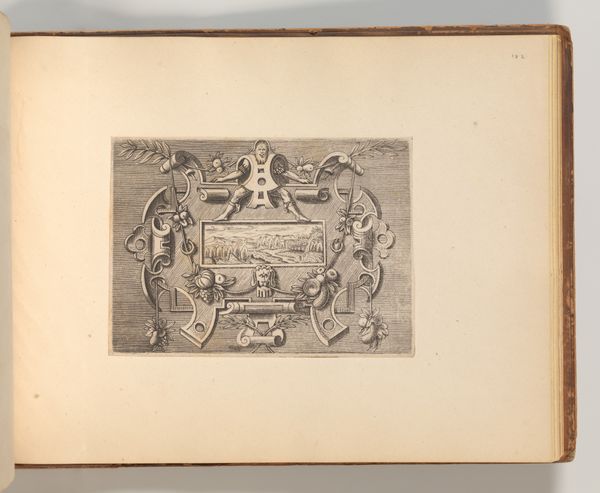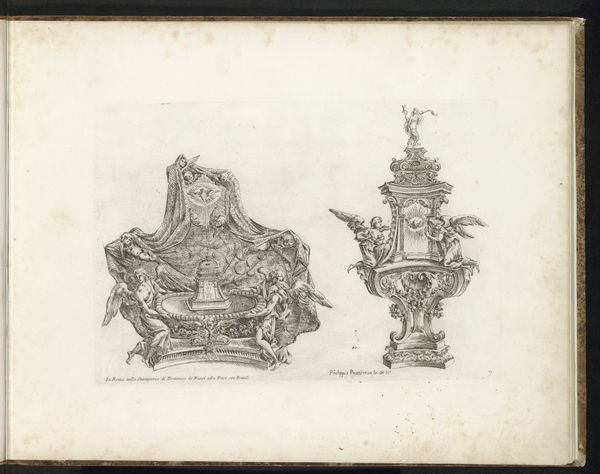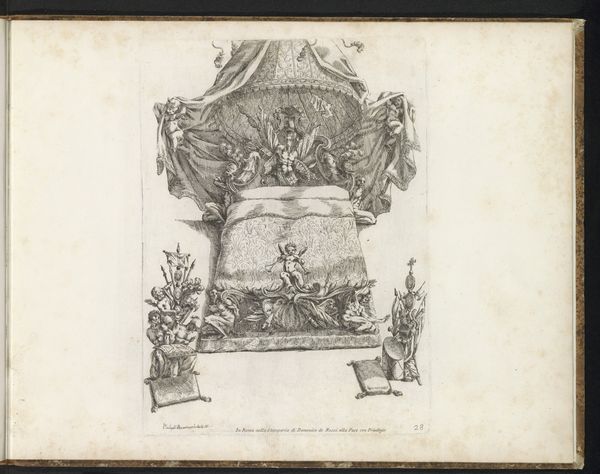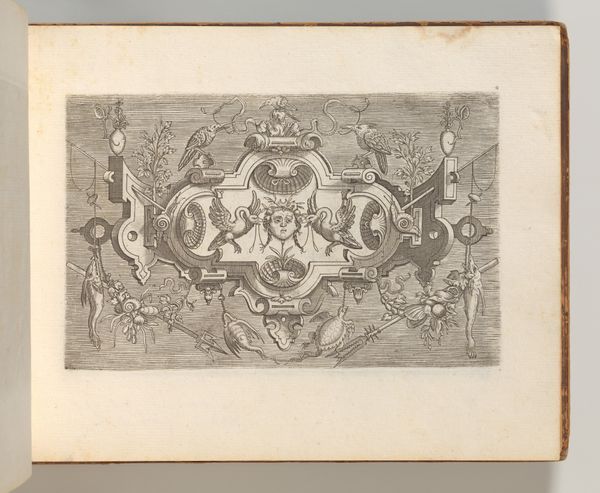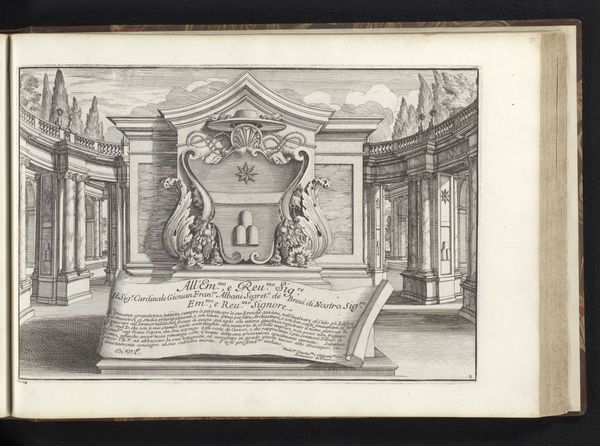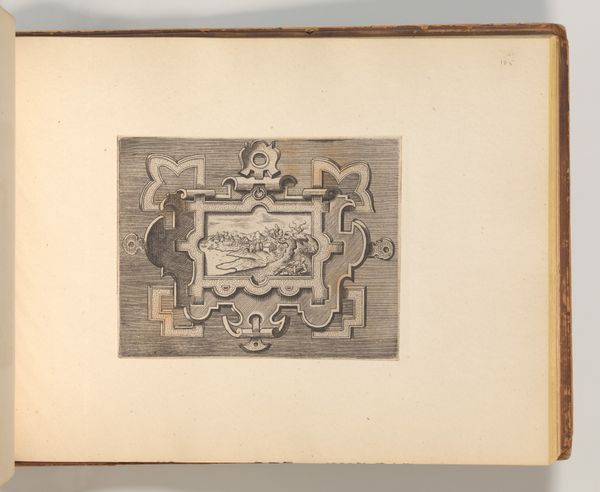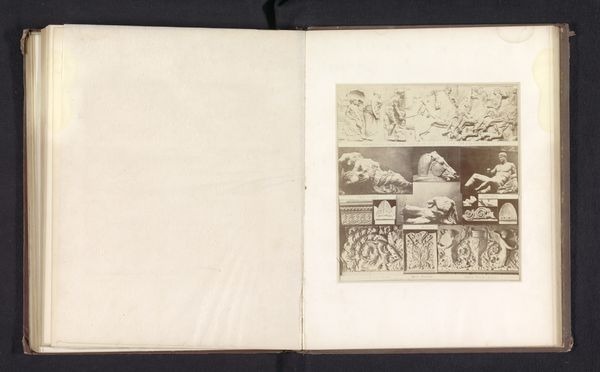
The Ornaments Atop the Right Portal, from the Arch of Honor, proof, dated 1515, printed 1517-18 1515
0:00
0:00
drawing, print, engraving
#
drawing
# print
#
figuration
#
11_renaissance
#
history-painting
#
northern-renaissance
#
engraving
Dimensions: Sheet: 18 1/4 × 24 3/8 in. (46.3 × 61.9 cm)
Copyright: Public Domain
Curator: Looking at this print, what captures your attention first? Editor: The griffin, definitely. Perched atop that elaborate structure, gripping a banner that says “halt mass” it has an air of mythical authority, almost like it's guarding something significant. Curator: That is “Halt Mass,” in German, literally “keep measure” – interesting that you’re drawn to it. This engraving, rendered by Albrecht Dürer, dating back to 1515, with printing finishing in 1517-18, offers a detailed glimpse of architectural ornaments intended for the Arch of Honor. It’s quite a monumental project meant for Emperor Maximilian I. Editor: An arch fit for an Emperor—explains the opulence. The detail Dürer achieves with engraving is phenomenal. Look at the feathers of the griffin and the intricacies of the ornamentation. But that motto... What does that signify within this context? Is it some specific direction meant for those who pass below the arch? Curator: That is a good point. The 'keep measure' motto connects, most directly, with Maximilian's obsession with his own legacy and the concept of his reign as divinely ordained and rightly proportioned. The arch, and therefore each ornament, acted as propaganda—an attempt to ensure his place in the historical narrative. Dürer, as the artist, worked almost as a public relations agent for the empire. Editor: Ah, so the "measure" wasn't necessarily spatial but something greater? The griffin, a guardian, embodies the power and wisdom needed to "keep" that measured ideal, both politically and morally. The object adjacent to it, resembling an inverted umbrella trimmed with hanging ropes—what's its potential meaning within this assemblage? Curator: Intriguing thought about "keep measure" being less about spatial. Well, the object next to it is probably an inkstand or vessel meant for official decree, a visible symbol for imperial documents being handled beneath the arch. The image must legitimize a historical vision; it must communicate effectively and contribute to collective cultural memory of Maximilian’s reign. Editor: Dürer seems to have been more than just an artist; he's a shaper of perceptions, building the empire through images. Fascinating to witness how art transforms into historical narrative through symbolic composition. Curator: Yes, definitely! It prompts us to consider how visual elements work to shape how we remember the past, something certainly important when one thinks about the legacy and power of cultural heritage.
Comments
No comments
Be the first to comment and join the conversation on the ultimate creative platform.
